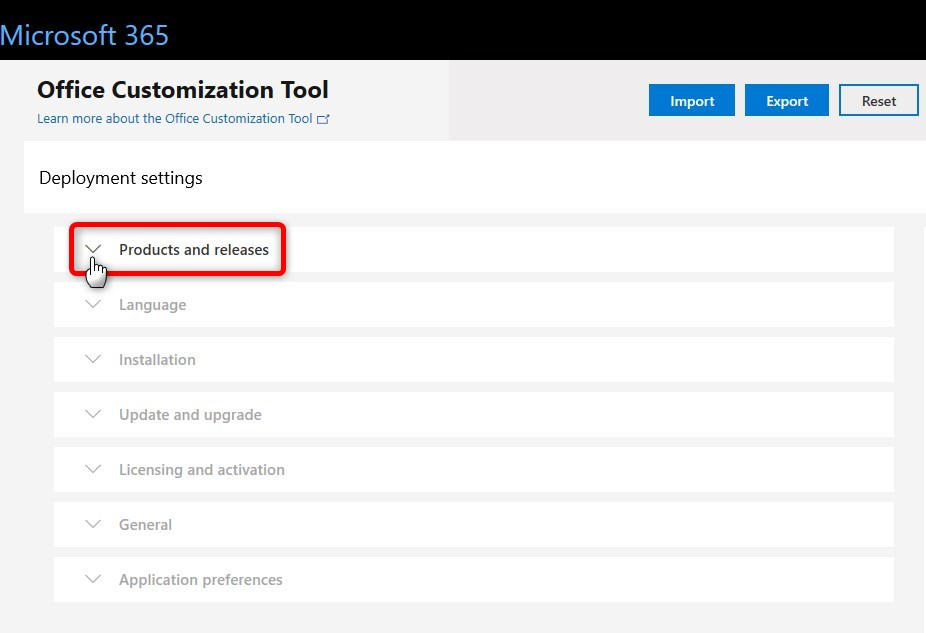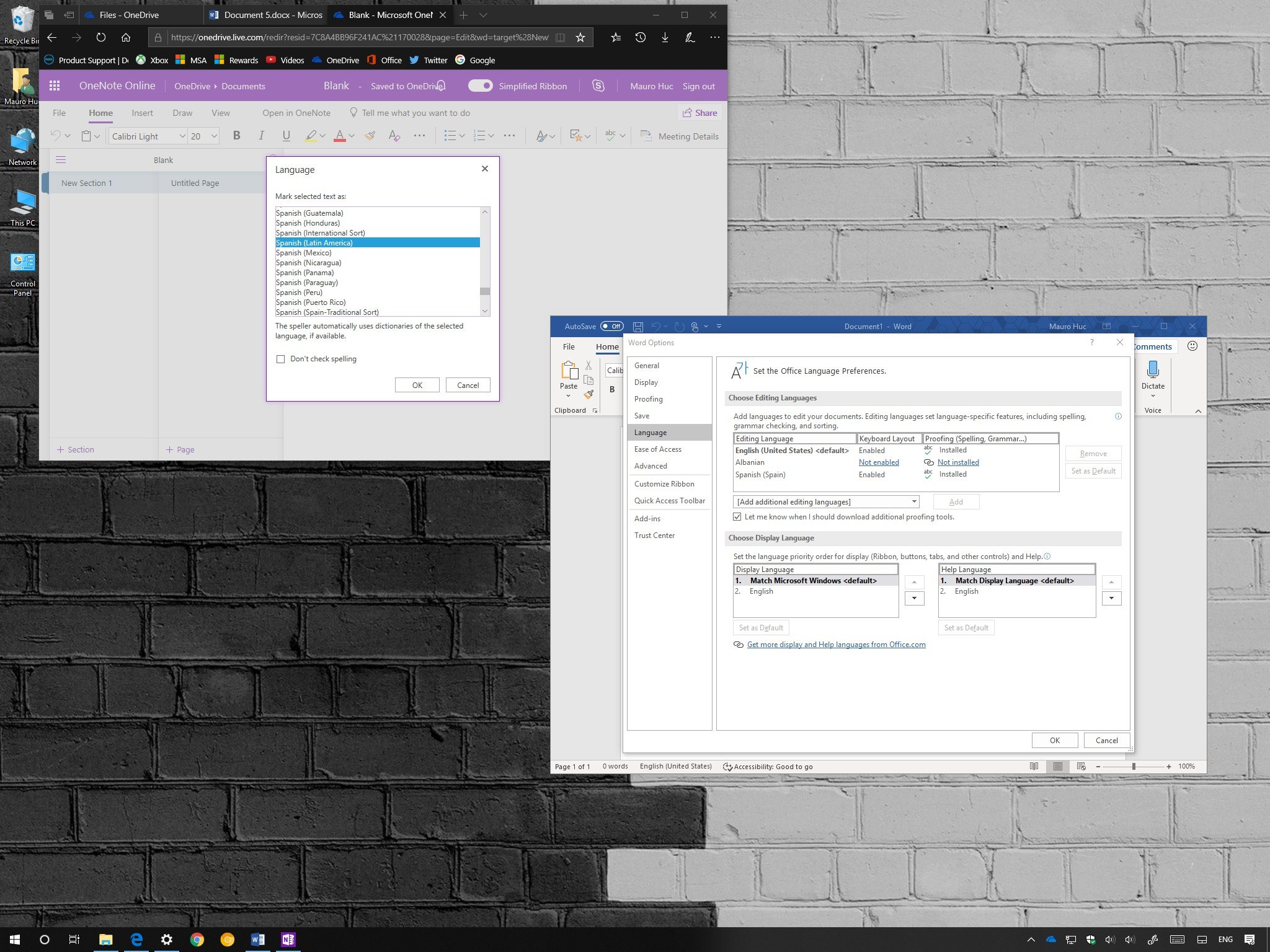Change Office 365 Language
It isn’t necessarily hard to switch the languages you’re using in Microsoft Word, once you know how. Yet procedures for making changes vary, based on whether you’re using the Windows or Mac version of the application, or Word Online. So, too, do the numbers of languages supported and the degree of support provided, even among Windows editions of Office.
Many Types of Language to Change
Depending on the foreign language you want, you might be able to adjust the language for any or all of the following:
- Display language: Sometimes called the user interface (UI) language, which refers to the language used in the controls, menus, and buttons in Office applications.
- Help language: Used by Microsoft in presenting Office Help documents.
- ScreenTips language: Used for Microsoft's ScreenTips.
- Proofing language: This comes into play when you’re proofreading your doc for spelling and grammar.
- Keyboard layout language: Also referred to as the input language, which dictates which characters appear on the screen when you’re typing and editing docs in Office.
- Change the default language for all the SharePoint Online users. NewsfeedAbout meEdit my profile. (three dots)Language and regionAdd the display language OneDriveGear iconSite settingsLanguage settingsMark alternate language It's cool and awesome and flexible.
- Set language and time zone for multiple users from CSV: Use the below powershell commands to set regional settings for bulk office 365 mailbox users by importing users from CSV file. Consider the CSV file MailBoxUsers.csv which contains set of mailbox users with the csv column headers UserPrincipalName, TimeZone, Language, DateFormat and TimeFormat.
This is the email address for the primary technical person who administers your Office 365 subscription. This is the person who will receive communications about Office 365 service status. Preferred language: The preferred language determines the language for all communications that are sent from Microsoft to your organization.
Changing the keyboard layout language also lets you use foreign characters such as the tilde (ñ) in Spanish and umlaut (ä) in German. If you’re only interested in occasionally using accented letters from another language, it can be easier to use your native language in the keyboard layout language and simply add the symbols you desire; some or all of your keyboard keys might change if you swap your keyboard layout language instead.
How to Change Language in Word on Windows 10
In 2016, 2013, and 2010 versions of Word, language options are presented in the Set Office Language Preferences dialog box. To access this dialog box in Word, go to File > Options > Language.
The display and keyboard layout options for the entirety of Windows 10 can be configured separately in the OS. You can find these options by selecting Start > Settings > Time and language > Region and language. To add a new language to Windows 10, select Add a language.
Display and Help Language
- If the display language for Windows 10 is the one you want to use for the controls, menus, and buttons in Word, make sure the display language in Office is set to Match Microsoft Windows.
- If you want to use a different display language for Office, try to find the display language you’d like in the Set Office Languages Preferences Box. If you locate it, select Set to Default. The language you’ve selected will now appear at the top of the list.
- Also in the dialog box, you can set the Help and ScreenTips languages to be the same or different from the display language.
Keyboard Layout Languages
To change the keyboard layout language for Word:
- Select Choose Editing Languages in the aforementioned dialog box.
- If the language you want is already on the list, select the language, then select Set as Default.
- If the language isn't already on the Choose Editing Language list, select Add, then select the language from the Add list. If the language then shows as Enabled, select Set as Default.
If the language doesn’t show as Enabled:
- Select Not Enabled. Word will direct you to a Microsoft website where you can obtain a free download of a Language Accessory Pack, sometimes referred to as a 'Language Pack.'
- After downloading and installing the Language Accessory Pack for the language you desire, go back to the Set Office Language Preferences dialog box to confirm it’s installed as a keyboard layout language.
- If it shows as installed, select the language, then select Set as Default.
Language Accessory Packs for Office 2016 are far more plentiful than for Office 2013 or Office 2010. For example, Office 2016 supports Language Accessory Packs for the Afrikaans and Amharic languages, whereas Office 2013 and 2010 do not.
To change the proofing language for Office in Windows 10, follow the same procedures as for changing the keyboard layout language in the Set Office Language Preferences dialog box.
However, if the language is available as a proofing language, it will show as Installed instead of Enabled in Choose Editing Languages.
You can also go directly to Microsoft’s Language Pack support website for Office and download an accessory pack if the language you want to use for the display language or help language isn’t listed in the Set Language Preferences dialog box.
Depending on the foreign language, Office differs in degrees of support for display, help, keyboard layout, and proofing. A specific Language Accessory Pack might or might not support changes to the help or proofing languages, for instance.
How to Change Language in Word on Windows 8/8.1 and 7
To change the default display and keyboard layout options for all of Windows 8/8.1, select Control Panel > Language. To make these changes to Windows 7, select Control Panel > Region and Language.
If you’re using Windows 8/8.1 or 7 instead of Windows 10 and your edition of Windows doesn’t come with built-in support for languages you want to use, you’ll need to use an alternate method for installing these languages.
- The simplest way to download additional languages for Windows 8/8.1 is through Control Panel > Language, although you can also go to the Language Pack support site.
- Users of the Ultimate and Professional editions of Windows 7 can download additional language packs via Windows Updates. These are fully translated versions of Windows dialog boxes, menus, and help.
- Users of Windows 7 can also install Language Interface Packs (LIPs) from the Language Pack support site. Offered for Windows 7 only, the LIP is different from other Office language packs. The LIP provides a translated version of only the most widely used menu items, dialog boxes, and help content. Before installing the LIP, you must have any required parent languages already installed on your computer.
How to Change Language in Word Online (Word for Office 365)

Language options for Office Online, also referred to as Office 365, are similar to those in traditional Office. In Office Online. First, select Review > Language.
Display, Help, and Keyboard Layout Languages
Go to the Language Preferences area to set the display, help, and keyboard layout languages for Office 365. For languages not listed there, you’ll be directed to the Language Accessory Packs download site.
You can set the display language for the service or application where most of your documents live, whether that’s a third-party service like Dropbox or Microsoft’s own SharePoint. However, the display language chosen in Office 365 will override other choices.
Go to the Set Proofing Language dialog box to change the proofing language for Office Online. The change will only apply to selected text in the current document.
Document Translation
Unlike Office for Windows, language options for Office 365 also include an online translation feature, which can be used for a line of text or an entire document. The feature supports a wide variety of languages.
If you’re using a business edition of Office or Office 365 at work, your employer might prohibit some or all changes to language options. If you find yourself unable to switch to a different language, contact your systems administrator.
If you’re running either an Office or Office Online app on Windows 10, 8/8.1, or 7, you can use the Language bar in Windows to quickly switch between keyboard layout languages.
- To do so, first enable keyboard layouts for two or more languages in Windows 10 Settings or the Windows 8/8.1. or 7 Control Panel.
- An icon for the language bar should then appear on the taskbar, near the clock. In the Language bar. Select the language you want to use.
- Open your doc and place the cursor at the point where you want to start typing text in another language.
You can switch between installed keyboard layouts by press the keyboard shortcut Alt + Shift.
How to Change Language in Word for Mac

The display and keyboard layout languages used in Office for Mac are the same as the ones you choose for the operating system. For the most part, you cannot use separate languages for the OS and Office applications. However, you can specify a different proofing language for Office for Mac.
Display and Keyboard Layout Languages
To change the display language in OS X:
- Go to Apple > System Preferences > Language & Region.
- Drag the language you want to the top of the Preferred languages list to make it your primary display language. If your desired language doesn’t appear on the list, select the Plus(+) and add the language.
To change the keyboard layout language for OS X:

Go to Language & Region > Keyboard Preferences. If the language you want isn’t on the list, select the Plus(+) and add it there.
Proofing Language
To change the proofing language in Office for Mac:
Select Tools > Language in Word or another Office application. If you wish to change the proofing language for all new documents, select Default.
If you select OK instead of Default, the proofing language you’ve chosen will only apply to the current file.
Adding Characters from Foreign Languages
If you’re using English as your keyboard language, a handy method for adding accents and symbols from foreign languages to Word and Word Online is to use a chart of shortcuts for international characters produced by Microsoft.
The easiest way to add an accent from a foreign language in Word for Mac is to hold down the key for the letter you wish to accent. A small menu will appear, showing you a list of available accents for the letter. Simply select the accent Avs audio editor crack download. you want.
Office 365 Sign In Email
Language packs aren’t available for Office for Mac. If the language you want doesn’t appear in System Preferences > Language & Region of the Mac application, then it isn’t offered for Word for Mac.